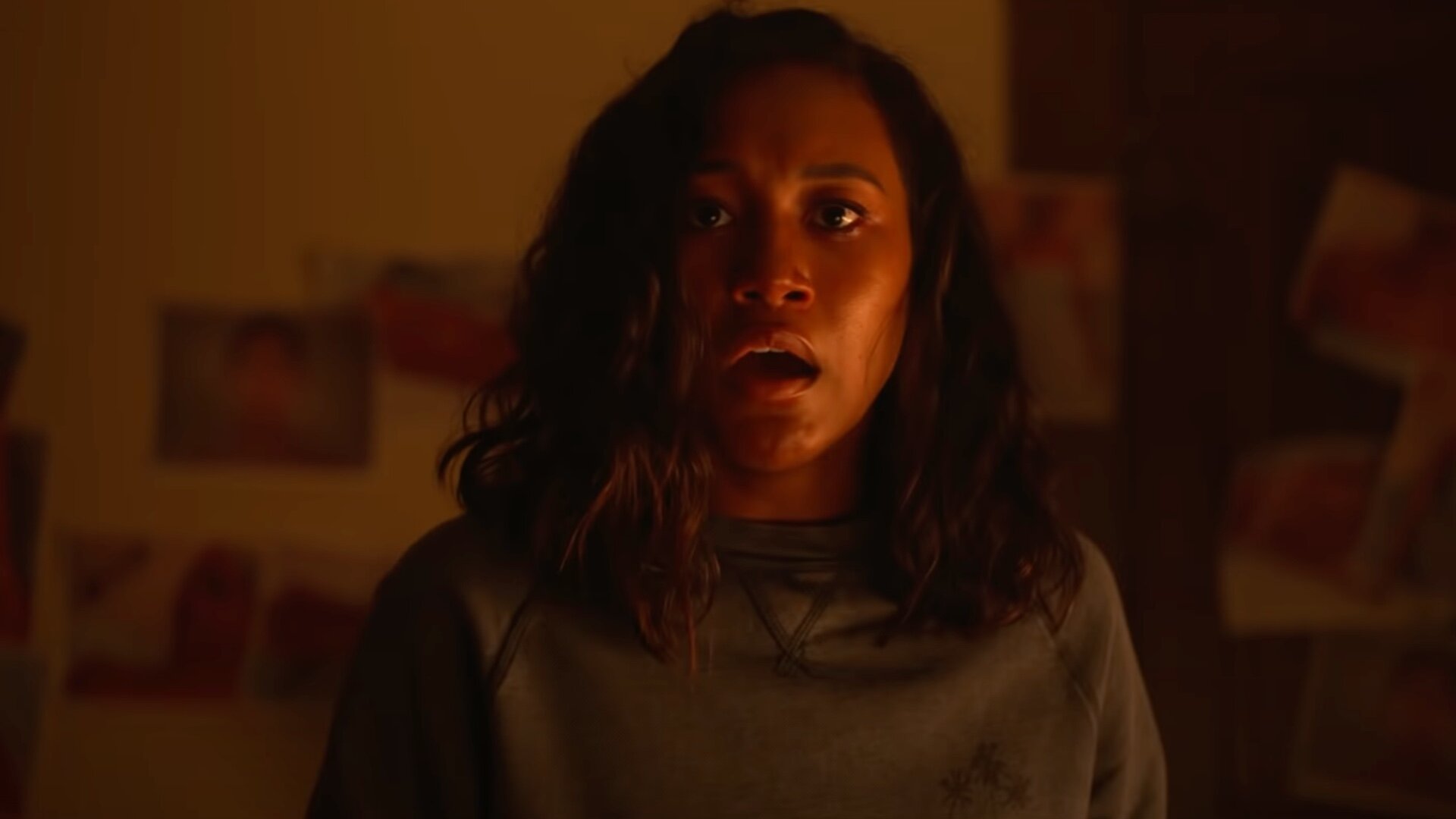Table of Contents Show
Spoiler alert: This spoils 2017 Perkins’ and 2021 Brice’s + Gayden’s There’s Someone Inside Your House. Beware of plot spoilers and character arcs, but not many spoilers on who is killed or who is the killer. This is only basic plot spoilers or relevant spoilers. [REDACTED] will be in place for the killer’s identity as it is not the same as the novel.
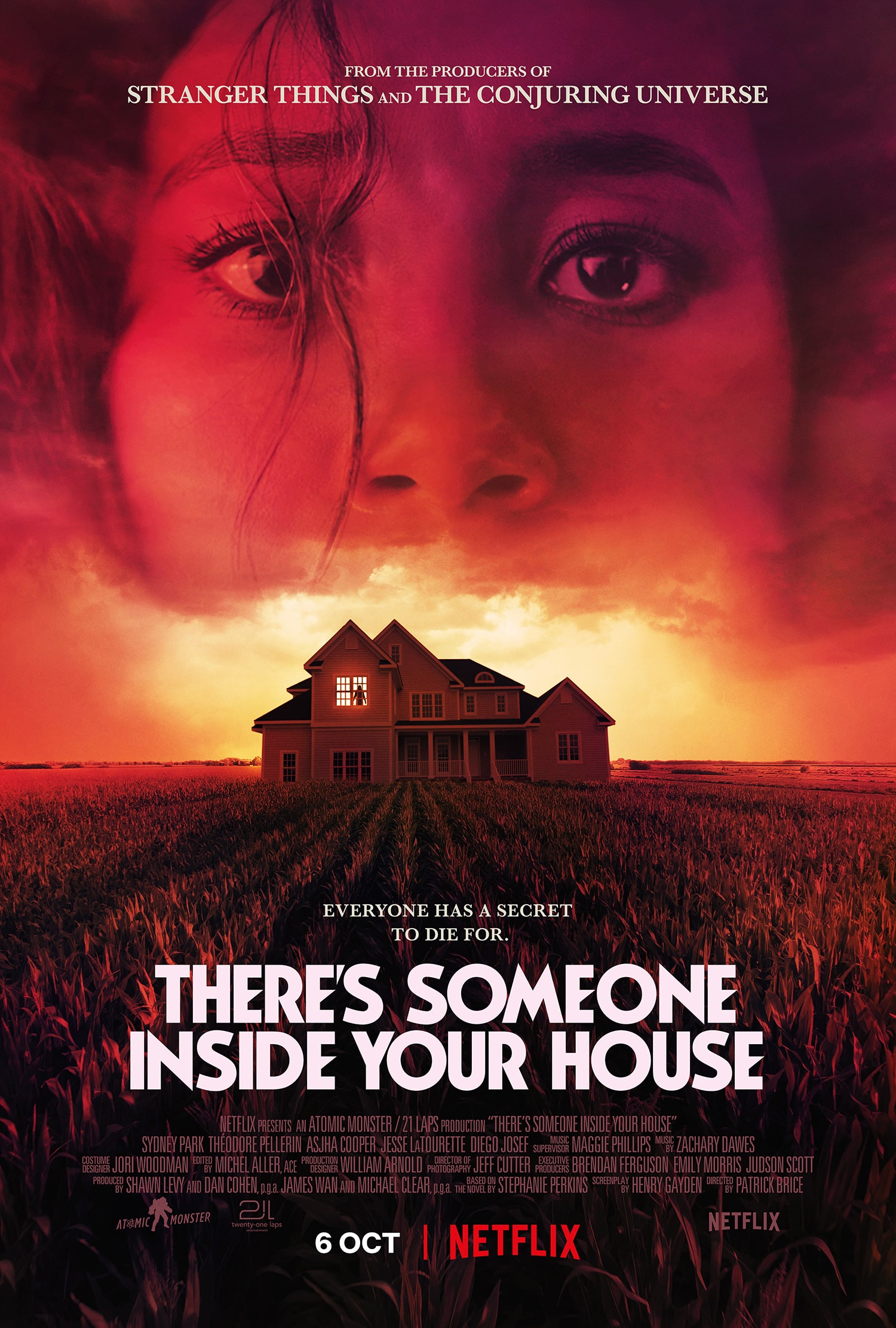
The author of some of the best short/quick thrillers for young adult readers, Stephanie Perkins, has made a name for herself; in addition to her newest release, The Woods Are Always Watching (August 2021), Perkins has a Netflix movie deal. The forthcoming Netflix film, to be released on October 6th, 2021, is based on the novel There’s Someone Inside Your House, published in 2017. As if timed for Halloween, this atmospheric thriller satisfies every slasher itch you may have. From slicing to dicing to slashing throats, TSIYH is hyperpostmodern gore at its finest. Even though this is a ‘review analysis,’ as I read the book recently, you can also use it as a standalone (film criticism only) for those who prefer watching the movie rather than reading the book.
- Dir. Patrick Brice
- Wri. Henry Gayden
- Prod. Shawn Levy, Dan Cohen, James Wan and Michael Clear
- October 6th (2021)
- Netflix Entertainment
So, how well does Stephanie Perkins’ There’s Someone Inside Your House (2021) adapt the novel? Spoiler alert: Very well.
Netflix Original: There’s Someone Inside Your House (( Perkins, Stephanie. 2021. There’s Someone Inside Your House by Stephanie Perkins: 9780142424988 | Penguin Random House. 2021. )) (( Gayden, Henry, and Stephanie Perkins. 2021. “There’s Someone Inside Your House.” IMDb. October 6, 2021. ))
Like most films, the movie changes the characters and takes away moments that I considered integral to the story as well as adding in moments that were not a part of the novel. The inclusion of these elements does not, however, ruin the viewing experience, as they act as a nice hyperpostmodern twist on There’s Someone Inside Your House rather than being stifled in 2017. (I did miss the gothic atmosphere: Ollie’s colored hair and piercings, Alex’s more gothic nature.) Thus, most of the main characters have changed (in some way), along with the beginning sequence and portions of the overall plot. In all honesty, the film functions more as a film counterpart or loose adaptation than a direct book-to-film adaptation. (If you are looking for a direct adaptation, it is not that.)
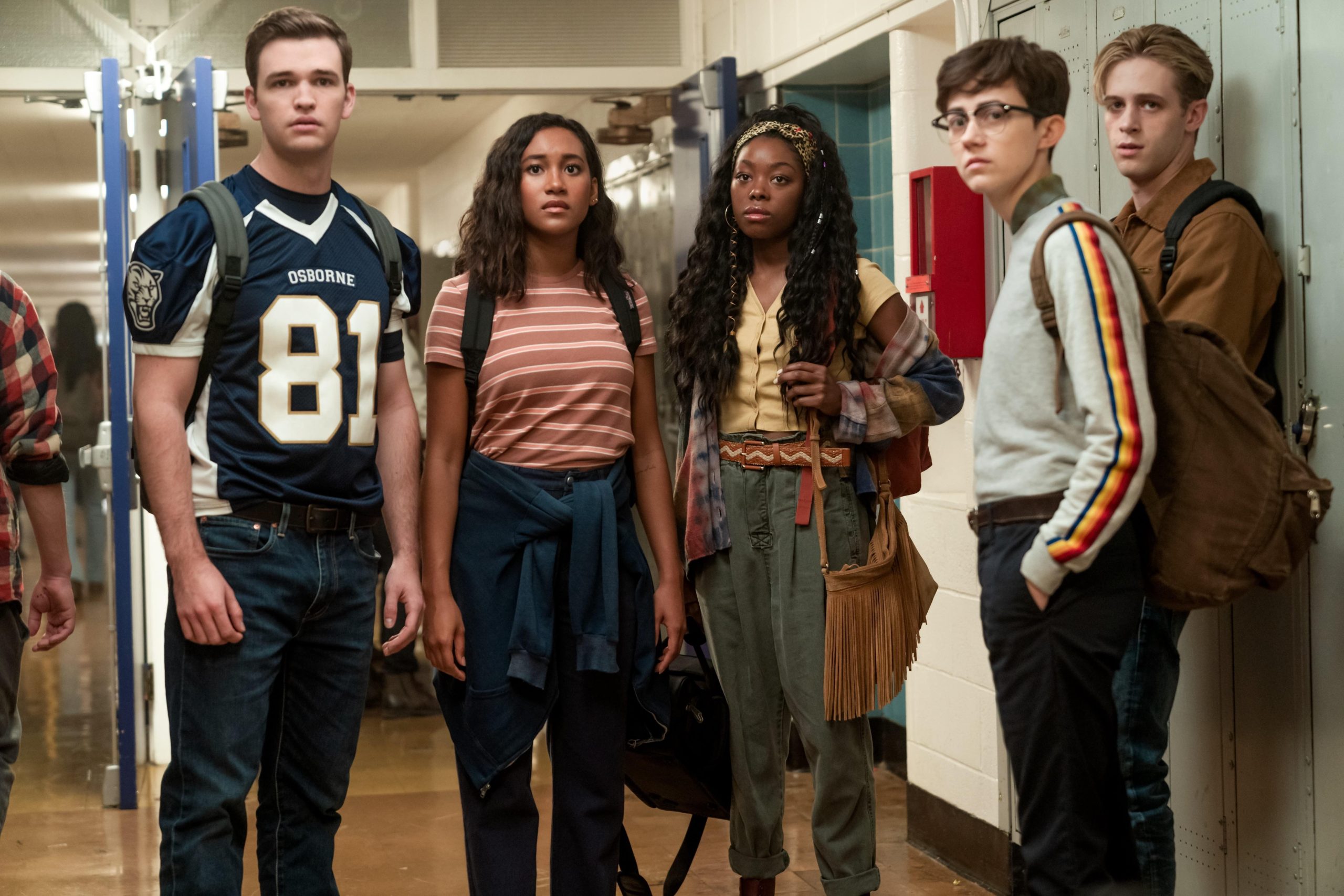
While the characters are identical in terms of name or personality, the fate of each has been adapted to fit the times; there is a Fentanyl narrative, they smoke pot at school functions instead of getting drunk, and the score is reminiscent of the present rather than the past. In addition, the overall killer and the sequence order are not the same. Compared to the length of the book, the film is only an hour and a half. Rather than a developed narrative, which is what Perkins’ novel is, it is more of a quick slasher.
TSIYH: The Book, A Quick Synopsis (Released September 12, 2017)
Since she moved there a year ago, Makani Young (film: Sydney Park) has been enjoying the quiet life in Osborne, Nebraska. Almost one year has passed since her parents sent her away due to the incident in Hawaii. Meanwhile, Makani has become close friends with Alex (film: Asjha Cooper), Darby (film: Jesse LaTourette), and Ollie (film: Théodore Pellerin) at Osborne High School. Her past is still haunting her, but that is put aside when a series of brutal murders occur at her school. With the threat of terror growing closer and the hunt intensifying for the killer, the dark secrets of the past will finally be revealed.
TSIYH: The Movie, A Quick Synopsis (Released October 6, 2021)
Makani Young is a high school student living with her grandmother in Nebraska after moving to the state from Hawaii. Although she came to Nebraska for a very specific reason, she is keen to ensure that no one finds out, but just as the countdown to graduation begins, her classmates are being stalked by a killer. This killer targets the town’s dark secrets, terrorizing its residents while wearing the mask of their own faces. So Makani and her friends embark on a rampage to discover who the killer is before Makani is exposed herself or any of them becomes a victim.
The Cinematic Style Of Netflix’s There’s Someone Inside Your House (2021)
After discussing the overall changes in the synopsis, it is now time for filmmaking. In addition to the film’s directing, cinematography, editing, and score, this film makes a good attempt at creating a new story within an existing one. Despite the score’s zoomer nature, it complements the hyperpostmodern feel it provides. In this new definition of horror, there is a marriage of art-house and Carpenter and Craven’s postmodern horror films. This film seamlessly merges Halloween and Scream; it is the height/beginning era of Jordan Peele’s Get Out, which employs the film as a means of conveying horror, romance, and a sense of dread. In a sense, it is horrifyingly romantic.
TSIYH: Patrick Brice’s Directing And Jeff Cutter’s Cinematography
There’s Someone Inside Your House’s directed by Patrick Brice is a superb example of how hyperpostmodernism can be combined with postmodernism. Personally, the directing is the most noteworthy feature of this film. I particularly appreciate the wide-angle close-up of Zach Sanford (Dale Whibley) when he walks out of the interrogation room; it is pleasing to see the use of shallow focus in this sequence, which blurs the background and clears the foreground. Despite being set in a gruesome horror film, these modern shots are so fascinating and illuminating. There’s Someone Inside Your House does not hesitate to show all of the gory details of the book in the most aesthetically pleasing manner.
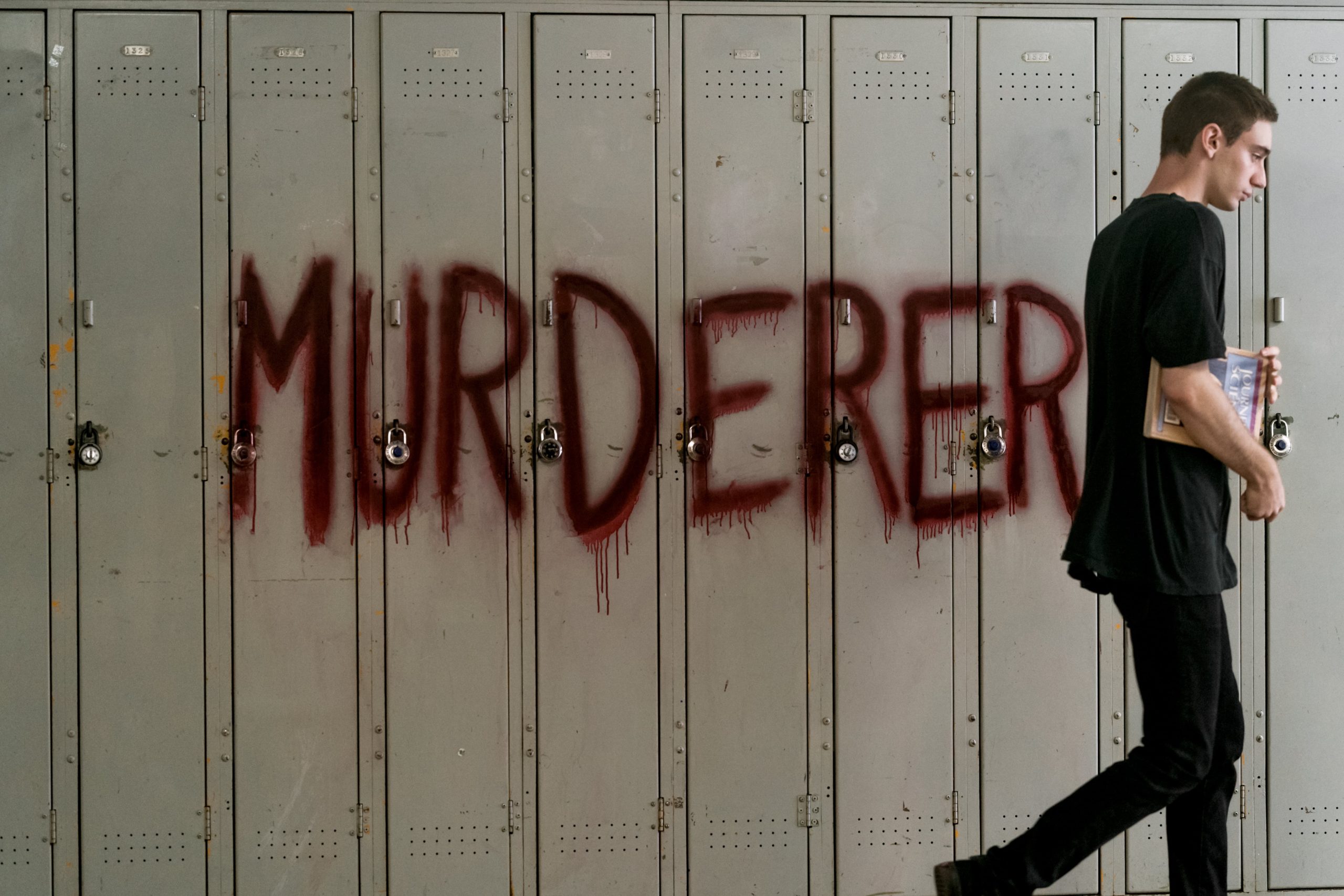
The film is elevated yet nostalgic of past horror, and with its own personal twist, There’s Someone Inside Your House makes its mark on the genre. There is a lot of resemblance to Fear Street and the directing that occurred in the recent trilogy that was released on Netflix during the summer. It is refreshing in color, the shots are original, and the writing by Henry Gayden adds to the experience.
Stunning Examples Of Hyperpostmodern Directing
- Makani, Ollie 31:08 — Romantic wide moving shot from left to right; Ollie is shown in the background to the right, with a wide shot. Makani, in the foreground of the shot, is texting. A romantic, illuminating element is created by the shallow focus change; the clear to blurred effect is fantastically done. It elevates that hyperpostmodern element into something of a romantic horror story. One may be reminded of Scream (1996) and Scream 2 (1997) (( COMMENTARY: Sid’s most romantic Scream installment is Scream 2 )), or the overzealous love story in I Know What You Did Last Summer (1997).
- Makani, Ollie 56:47-58:27 — There is nothing more romantic than an overzealous kiss at sunset. The ode to Stephen King’s 1922 (2010; 2017) or The Texas Chainsaw Massacre (1974). It is a romanticized and sensual rendering of past horror. The close-up of Makani and Olle in this wide shot has a sensual feeling. As soon as the wide yet close-up shot takes shape, it turns into a wide landscape shot with an extreme close-up. Ollie and Makani are lying diagonally, and the shot is focused exclusively on them. Within this vast expanse of space, it creates a frightening romantic experience. Makani trusts Ollie enough not to be the killer but is afraid that he might be the killer, which creates a vulnerability in the shallow focus of the film. It is a moment of love and vulnerability. The film is a 90’s ode to horror romance.
- Makani 1:01:19 — This is a cute little horror montage. Fun to watch. I love the slow pan at the end. A hyperpostmodern version of the ‘I’m afraid of the serial killer and am now home alone’ montage.
- Makani, Killer 1:04:44 — Mirror reflection in a wide shot. Shallow focus occurs when focused on Makani, and switches to deep focus on the killer when Makani bends down, a version of shallow focus. Makani is now in shallow focus while the killer is clearly visible. The frame changes once Makani appears again. This is a superb composition alongside a wide shot.
- Makani, Friends, Killer 1:09:28 — In order to portray the emotional fragility within the shot, an extreme close-up is used. Makani is talking to her closest friends about her past. It is quite emotional and elicits a feeling of sadness that is from the heart, as opposed to anger. Even though she just learned that Ollie may be the killer, as he was the only one who knew about Makani (to their knowledge), the scene screams sadness in a blue context, rather than an orange or red-tinged one. Considering Makani’s love for Ollie, this is a poignant and engrossing scene from the novel.
- Makani, Ollie, Caleb, Killer 1:14:38 — Makani in the extreme close-up shot of slow breaths. Ollie emerges from a shallow focus background to rescue Makani. Slow-motion is prevalent in both time and space, creating a sense of anxiety and the realization that Ollie is not the murderer.
- [REDACTED], Ollie, Makani 1:20:30 — The killer’s imitation of Craven and Williamson. This film ends with an unforgettable monologue that is comical. This movie shows not only Billy and Stu but also Psycho and the horrors of the past. I particularly enjoyed the killer’s final ode, “You know how long I have waited for this moment!” The reveal of the killer is a vital element of what makes this an enjoyable slasher.
- Makani, Ollie 1:24:18 — The fire erupting in the background to showcase the end of everything, the beginning of everything, but also the fire that erupts in their heart for one another. Stunning wide shot.
TSIYH: Mise-En-Scene
There’s Someone Inside Your House has acceptable and passable acting. Unfortunately, the performances are the film’s weak point. At the very least, many of the bits of dialogue are devoid of emotion. Ollie’s explanation in the book of what happened with his family is an essential moment in the book; however, in the film, the lack of emotion made me not care about Ollie’s past, which is a pity. It was a brief shot, a standard close-up, and did not offer any significant revelations. Among the immediate friends, Rodrigo (Asjha Cooper) was the least liked. Rodrigo’s performance was not particularly noteworthy; his entire arc has a monotonous quality.
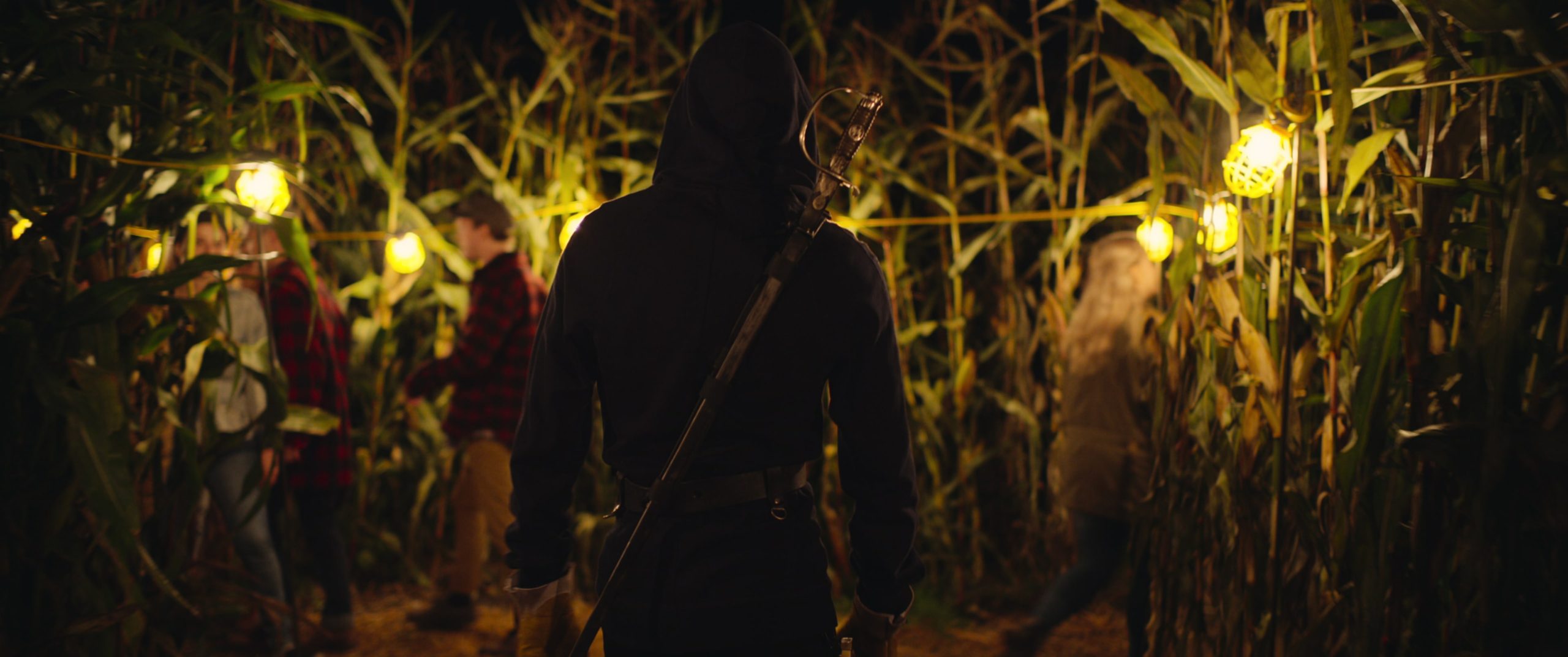
Apart from Makani and Ollie, Alex and Zach were the best overall. However, Zach’s relationship with his father was relatively flat. The incident should have been a moment of fright or anticipation of problems arising, but he went home to smoke more marijuana and have a big rage. As soon as his car is vandalized, we see that there is trouble, but that should have happened after Zach’s father has made his monologue in the car. The setback was when there would be moments of fairly good acting, but then it would devolve into a soap opera and become muddy. There is a hyperpostmodern element to that, as it seeks to be self-aware of itself — so the acting might be seen as precisely that. This was noticeable to the extent that it was quite jarring to go from a scene (with the same actors) that was very well-acted to one that was exactly the opposite. Nevertheless, the acting was effective enough to keep me watching.
Makani + Ollie: The Hyperpostmodern Romantic Ode
Many people will argue that There’s Someone Inside Your House is not a romance per se, but a horror equivalent to Scream (Craven, 1996). Romance is included for the simple reason of distracting your attention. My favorite part of the book was Makani and Ollie; it centered heavily on them and less on blood and gore. There is quite a bit about Ollie and his gothic vibes in the book, such as his trademark colored hair. I would have loved to see moments such as that in the film. However, the film offers a lot of romantic moments. Makani is, in essence, the final heroine. The romantic elements are a welcome respite from the gruesome scenes. In addition to the stunning shots, Makani and Ollie play an integral role in giving this movie a romantic horror quality; they create this element of young love which I found profoundly moving. It reminds me of the “I Know What You Did Last Summers” of the past decade.

Some readers enjoyed this element, and some readers did not, but they gave us enough to keep us engaged in Makani and Ollie. At the same time, the gruesome nature of the killings allowed us to be frightened and terrified as well. There’s Someone Inside Your House concentrates heavily on these two characters, so they are probably the most important to set aside and talk about — especially Makani.
The Future Of Horror With There’s Someone Inside Your House (2021)
There’s Someone Inside Your House is a wonderful tribute to past horror films; it represents the hyperpostmodern world in which zoomers live and millennials appreciate discussing for nostalgic reasons. The film features both a fun slasher in addition to the romantic aspect which is enjoyable. It is true that Netflix produces a great deal of content on the regular, but this one is particularly noteworthy.
